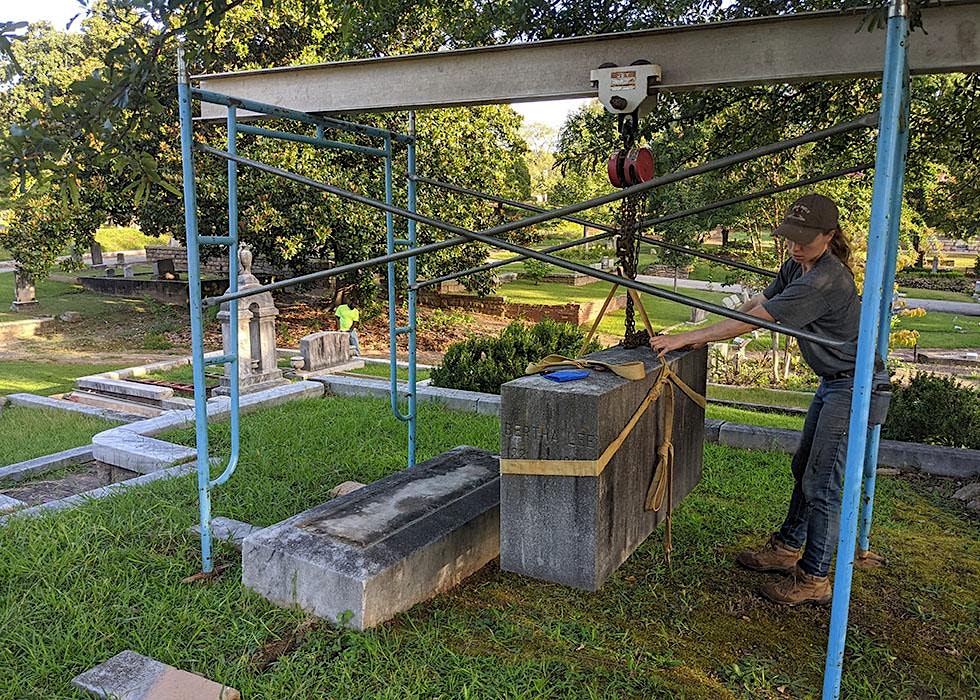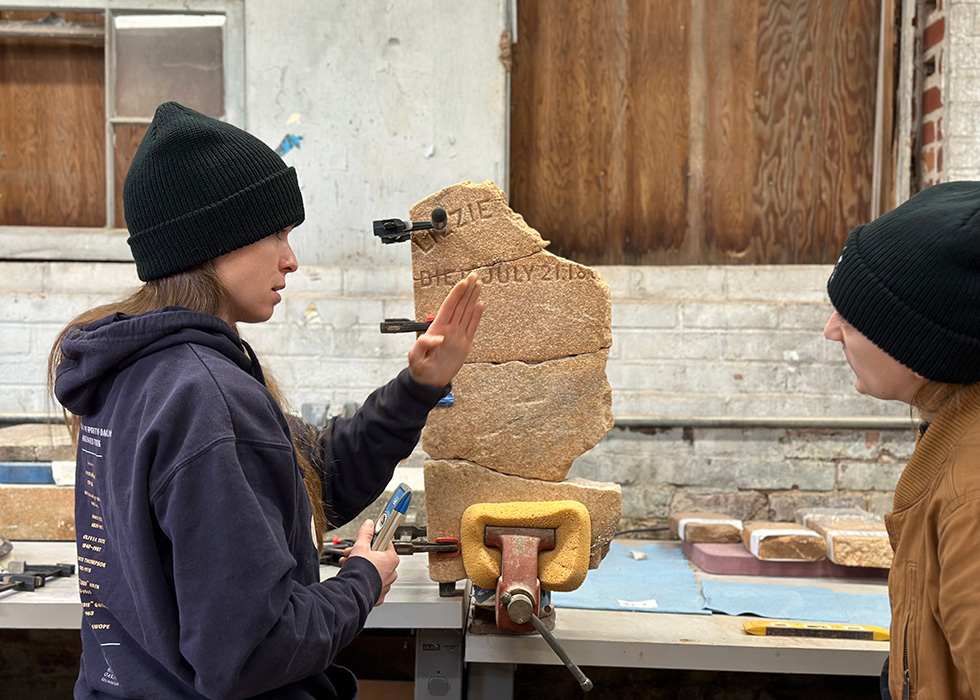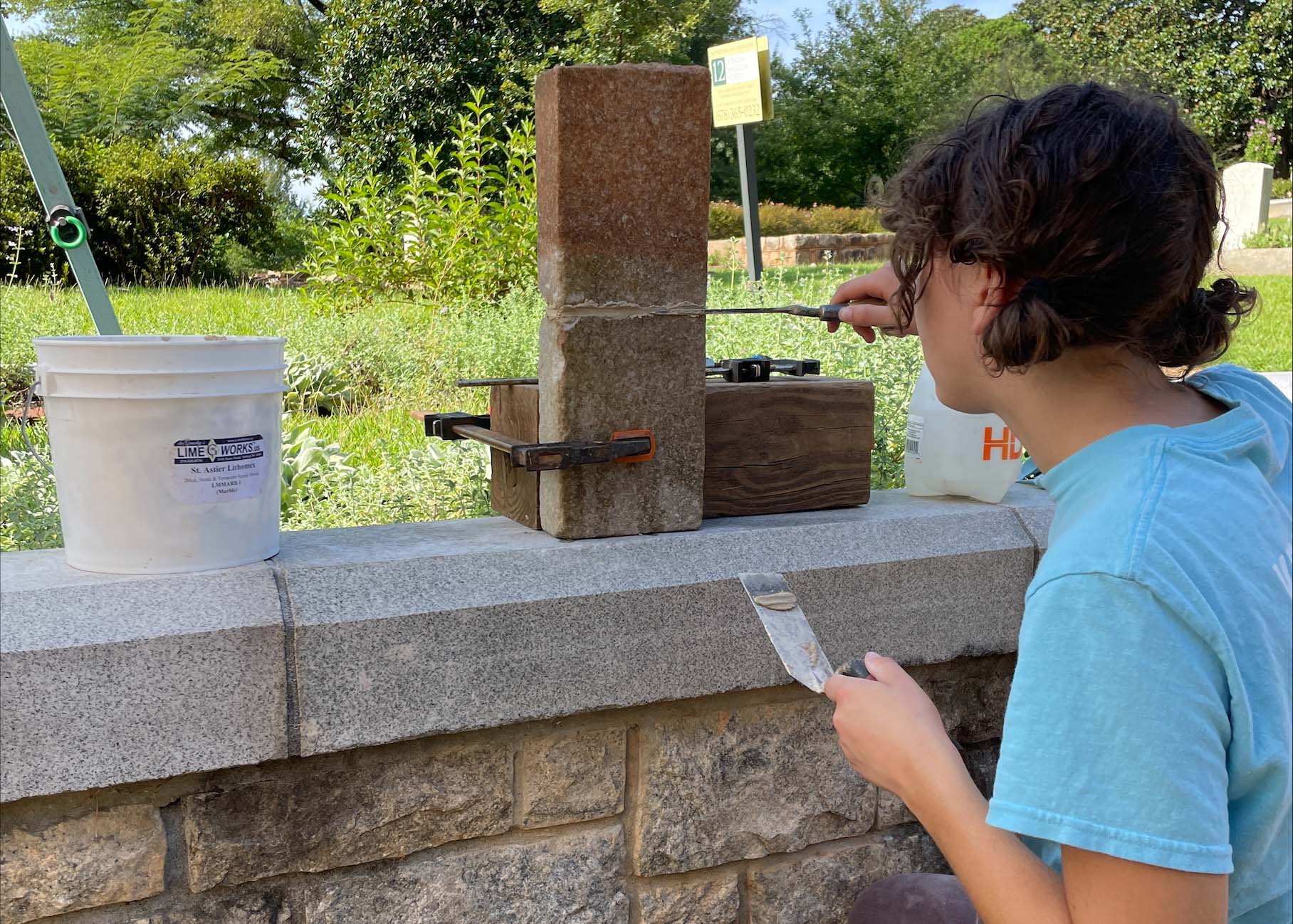
GIS Intern Lindsey Goff Seeks to ID Unmarked Graves
Meet Historic Oakland Foundation GIS intern and GSU graduate student Lindsey Goff. Here, Lindsey describes her work attempting to match burial records with unmarked graves in Oakland’s historic African American Burial Grounds.
At the beginning of 2021, I became a GIS (Geographic Information Systems) intern for Historic Oakland Foundation. A vast array of tasks can be accomplished with GIS, such as creating maps to display various types of data or creating online geographic databases. GIS is commonly used within the practice of archaeology, so over the course of my two-year graduate program at Georgia State University, I set out to improve this skill. I’ve been able to attend classes focusing on GIS, but I also understood the need to gain experience in the real-world setting. Historic Oakland Foundation, responsible for the preservation and interpretive operations at Oakland Cemetery, gave me an opportunity to apply the skills I was learning.
HOF is creating a GIS database to store data pertaining to burials, preservation, gardening, and history. One of my assignments as an intern was to review data and confirm information regarding individuals buried within the historic African American Burial Grounds. This area was established in 1868 as a segregated burial space for African Americans in Atlanta. Historically, this section was not as well-maintained or documented as the “white sections.” When looking over the entries in question, it quickly became apparent that the data that had been entered was in need of revision and that some information for these individuals is not necessarily correct. In several cases, the information is missing completely.

Luckily, a few years ago, HOF hired Bigman Geophysical to use ground-penetrating radar (GPR) to locate unmarked burials within the African American Burial Grounds. GPR allows us to “see” what is under the ground via radio waves without having to physically dig into the ground and potentially disturb graves. When I learned that HOF does not have anyone on staff with experience matching this GPR data to burial records, the archaeologist in me jumped on this opportunity to say, “I know how to do this!”
Over the last several months, I have been reviewing the GIS database to make sure that the information for those buried within the African American Burial Grounds is correct. To do so, I review the paper abstract for each family lot which details names, ages, where individuals are buried within the lot, and when they passed away. Sometimes information is missing. Other times, the abstract indicates that a person’s location is unknown, or it will simply show that a grave space is occupied with no further information. I have been attempting to match the GPR data to each family lot and checking the abstracts to see if I have the necessary information to potentially match unmarked graves to their families or to individual names. This can become complicated if there are multiple people who are listed as “unknown grave numbers,” as it can become a slippery slope to say who is who without further analysis of the actual bodies. Happily, we have been able to match several people to their respective family lots. This process, as well as the discoveries I made, will be displayed on a “Storymap” that will be released in June for Historic Oakland Foundation’s Juneteenth celebration.
My time at Oakland has been incredibly enriching, and I have learned so much not only about GIS but also about the history of both the Cemetery and Atlanta. I was able to learn more about how to further use the archaeological skills I had gained inside the classroom and apply them to this GIS internship as well. To say that I am sad that this internship is ending is an understatement. The entire HOF team has been nothing but supportive, encouraging, and inspiring. I am incredibly excited for my GIS Storymap to be published for the public to see, and to continue working with the African American Burial Grounds Unmarked Graves Project as a volunteer.



